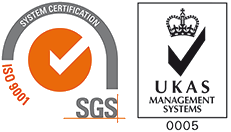CITY OF THE FUTURE
Dubai’s focus on innovation and technology has transformed it into the world’s largest laboratory for testing disruptive ideas and exploring future challenges and solutions.
In 1880, only 3% of the world’s population lived in urban areas. Today it is around 55% with the number of urban residents increasing daily by roughly 200,000. The United Nations (UN) estimates that continuing urbanization and population growth will add 2.5 billion people to the world’s urban population by 2050, with nearly 90% of the increase concentrated in Asia and Africa. The expected increase in urban land during the first three decades of the 21st century will be greater than the cumulative urban expansion in all of human history.
Currently, cities generate 80% of the world’s gross domestic product. According to GlobalData, around 8.2% of the world’s population (that’s roughly 600 million people) live in one of the 35 megacities located around the world. Together, they contribute a staggering 14% of the world’s total GDP. But as urbanization gathers pace, so do the challenges.
By 2050, the UN projects that demand for water and energy will increase by 55%. As people migrate to cities, existing infrastructure will need to be improved.
It is these challenges that His Highness Sheikh Hamdan bin Mohammed bin Rashid Al Maktoum, Crown Prince of Dubai and Chairman of the Dubai Executive Council, addressed in a keynote speech titled ‘7 Key Principles for Future Cities’ at the World Summit of Governments held in in Dubai recently.
“The future of countries, the future of human beings and the future of life is directly linked to the future of cities. Talk about the future of cities is always linked to Dubai because many of the world’s cities view Dubai as a city of the future,” HH Sheikh Hamdan said.
“There are seven main principles and transformations that will be witnessed by cities around the world in the coming years and there are ways to prepare for them and take advantage of the opportunities offered by them.”
The first shift highlighted by HH Sheikh Hamdan will see a radical transformation in the design of cities. Most cities were designed in the early 20th century with the invention of cars and catered for the traditional economy. However, the 4th Industrial Revolution (4IR) is vastly different in scale, scope and complexity from any that have come before; and will radically alter how people live and work. New technologies are already fusing the physical, digital and biological worlds, affecting economies, industries and governments. Cities will have to be redesigned to accommodate such changes.
Rapid urbanization increases congestion, requiring new transport models. HH Sheikh Hamdan explained that the cities of the future will focus on creating new ‘roads’ in the atmosphere and underground, and we see this in projects such as Hyperloop and the RTA’s flying taxi in Dubai. Furthermore, converting 5% of urban transport from conventional to self-driving will reduce congestion by 40%.
Rapid urbanization increases congestion, requiring new transport models.
HH Sheikh Hamdan explained that the cities of the future will focus on
creating new ‘roads’ in the atmosphere and underground, and we see this
in projects such as Hyperloop and the RTA’s flying taxi in Dubai
The third shift is that artificial intelligence and data revolution resulting from internet applications and self-driving systems will make cities more communicative, secure, intelligent and productive.
HH Sheikh Hamdan said that the fourth shift will be in the way cities use resources. As technology alters our lifestyle in cities, it will change the way we consume resources to become more efficient and environmentally-friendly.
The fifth transformation is the concept of cities’ competitiveness and how they compete at the global level. His Highness pointed out that future cities will be platforms linking minds, resulting in innovation, which is central to knowledge economies. This will cause the sixth shift through a transformation of urban economies.
“The seventh and final transformation is a shift in governance, a shift in legislation and government action. A future life model cannot be enabled in cities without governance and flexible leadership,” HH Sheikh Hamdan concluded.
HH Sheikh Hamdan has been entrusted by HH Sheikh Mohammed bin Rashid Al Maktoum, Vice- President and Prime Minister of the UAE, and Ruler of Dubai, with overseeing numerous initiatives to ready Dubai for the future.
A defining characteristic of HH Sheikh Mohammed is his vision. “We are a country fond of the future; which is the key secret of our success. Our government is a ‘Future Government.’”
HH Sheikh Mohammed launched Dubai’s e-Government project in 1995 at a time when most people were barely aware of the internet. By 1999, he issued a deadline of 18 months to make Dubai Government services fully online and ordered the creation of Dubai Internet City, recognising the growing importance of the worldwide digital economy.
In 2015, HH Sheikh Mohammed unveiled Vision 2021, with national priorities that include worldclass health and education, and the creation of a knowledge-based economy tangible in the forthcoming Mission to Mars and Expo 2020.
IN 2018, DUBAI WAS
RANKED FIRST
GLOBALLY IN ATTRACTING
FOREIGN DIRECT
INVESTMENT FOR
ARTIFICIAL INTELLIGENCE
AND ROBOTICS
An integral part of this vision is Smart Dubai, which is driving the emirate’s evolution to become the world’s smartest city by 2021. As a result, Dubai is pursuing one of the most ambitious Information & Communication Technology (ICT) integration programmes ever undertaken.
Key strategic goals include transforming more than 1,100 essential government services into smart services carried out primarily online; introducing autonomous vehicles and smart transportation services; providing free, high-speed wi-fi across the emirate; and developing a data-driven economy that authorities estimate will generate an additional AED10.4 billion (US$2.83 billion) in GDP by 2021.
Dubai 10X sets the Government of Dubai on a mission to be 10 years ahead of all other cities – hence the name 10X (with X symbolizing experimental, out-ofthe- box future oriented exponential thinking).
Big data, artificial intelligence (AI), blockchain and 3D-printing are central to this future and supported by Smart Dubai initiatives such as the Global Blockchain Challenge, Dubai Smart City Accelerator and Dubai Future Accelerators. Dubai is preparing to be the first city to be fully powered by blockchain by 2020 using three strategic pillars – government efficiency, industry creation and international leadership.
In 2018, Dubai was ranked first globally in attracting Foreign Direct Investment for Artificial Intelligence and Robotics; while the UAE was ranked sixth in the global Smart Service Index, surpassing the likes of the US, UK and South Korea. By 2020, Dubai aims to be the happiest city on Earth and one of the top 10 sustainable cities.
Dubai’s focus on innovation and technology has transformed it into the world’s largest laboratory for testing disruptive ideas and exploring the challenges of the future. With this top-down approach, Dubai is setting a prime example for other governments around the world to follow.
As HH Sheikh Hamdan said on Twitter: “Anticipating future shifts and challenges, we need to harness the power of innovation and creativity to set standards for smart cities. We are working hard to realise the vision of @HHShkMohd to place Dubai 10 years ahead of other cities.”








